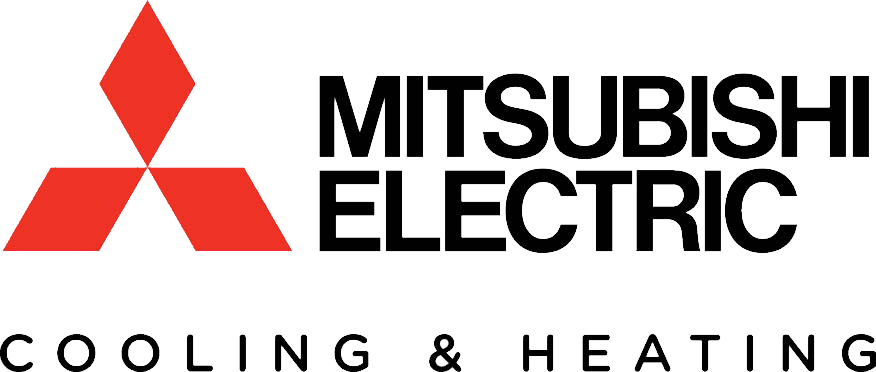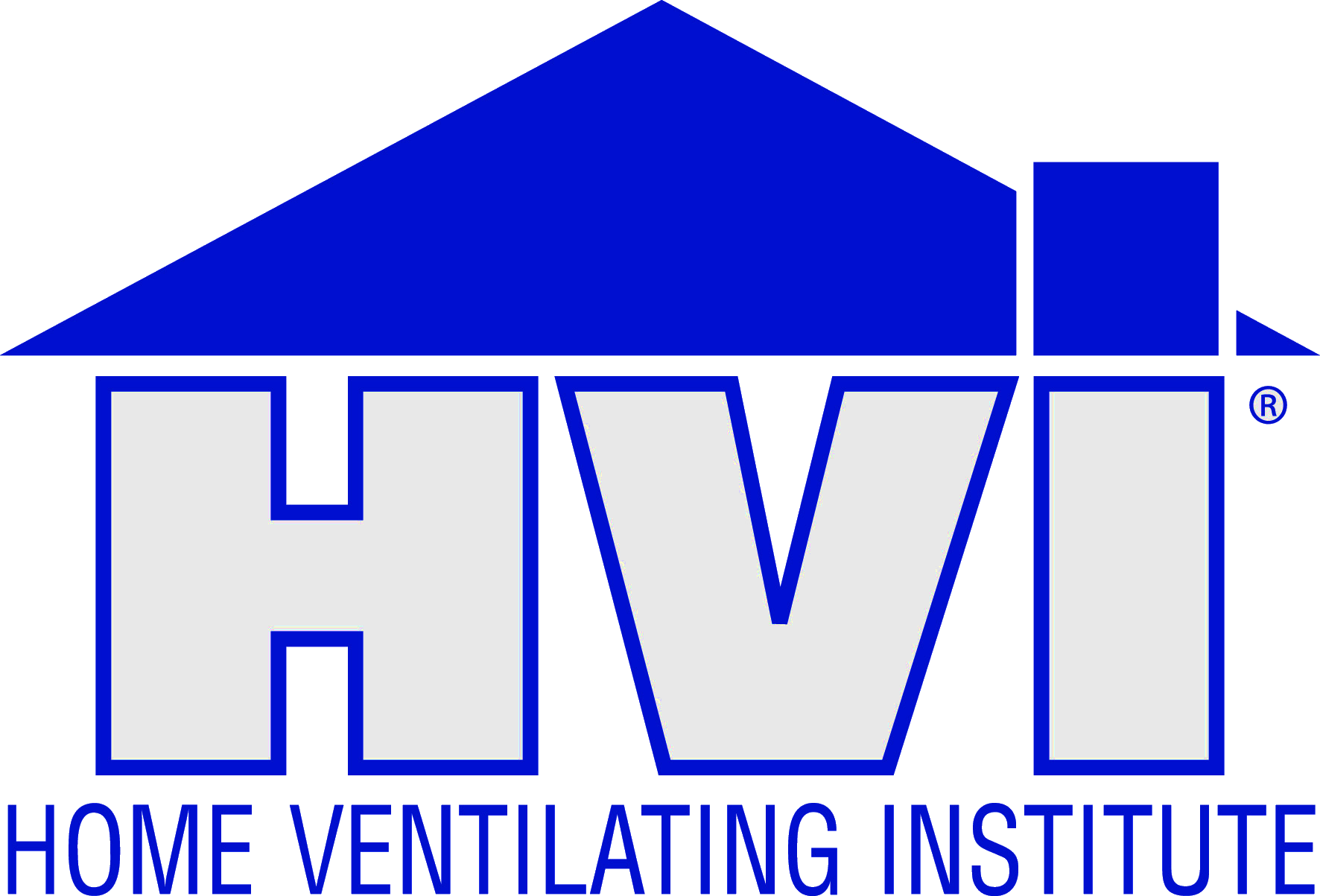Ep211: Healing Your HomeChem
Episode 211: Healing Your HomeChem
Grace and Corbett dive deep into how to control HomeChem with strategies including filtration, humidity control, outdoor ventilation systems, and modern make up air for controlling home pressure imbalances. And also, why you should AVOID certain air cleaning devices, home products, and chemicals in your home- and how to avoid them using the Six Classes approach.
Featuring atmospheric chemists Delphine Farmer and Charles Weschler, environmental engineer Marina Vance, indoor ecology researcher Rob Dunn, and municipal water engineer Amanda Bauner.
Home systems highlighted include Fantech's radon mitigation system, ERVs, CM3000 powered HEPA filter unit, and kitchen exhaust, along with Aprilaire filters, Santa Fe Ventilating Dehumidifiers, Fanimation ceiling fans, and Elite Water Systems' whole home softener and point-of-use reverse osmosis filters. Learn more about the HOMEChem Experiment HERE.
DIVE DEEPER WITH THESE RESOURCES:
TRANSCRIPT:
Coming up on Home Diagnosis...
Ventilation means wildly different things to different people.
There's the theory, there's the reality and there's the practice.
The reality of a lab is not the reality of a home.
This exciting place where you start to bring things into your home.
Controlled ventilation is paramount.
You just walked past the most disgusting thing in this house and you didn't even notice it.
Home Diagnosis is made possible by support from the Alfred P. Sloan Foundation,
by Fantech, 'Breathe easy,'
by Broan-NuTone, 'Come home to fresh air,'
by Aprilaire, 'Everyone deserves healthy air,'
by AirCycler, Retrotec, and Santa Fe Dehumidifiers,
by generous support from these underwriters
and by viewers like you.
They say home is where the heart is.
And we certainly put our heart into building our first house. So how hard could it be to build another one?
I'm Grace.
And I'm Corbett.
In our TinyLab, we helped homeowners gain control of their homes through scientific testing. Now, as we build our forever home, we're testing ourselves.
Even though we know a few things about the invisible dynamics of homes. We're teaming up with scientists and building experts to design and build a perfectly tuned home for our family.
The physics, chemistry and microbiology of a home might seem mysterious, but it doesn't need to be.
While this is a personal story full of twists and turns...
It's also the story of the science of homes.
Join us to unlock the mysterious science of your home too.
Welcome back to Home Diagnosis.
In the last episode, we delved into the headaches of HomeChem, describing the intricate and invisible dynamics of chemistry and microbiology inside our homes. Now, let's heal those headaches.
Your HomeChem can be healed partly by understanding the physics of your home, which we've been exploring a lot throughout this season of Home Diagnosis.
Now, let's dig into a tool we haven't discussed in depth: ventilation. Fresh air.
Ventilation means wildly different things to different people, but we'll try to study the whole scope.
The main goal of all of this, though, no matter how we do it, is to control our homes' chemistry and microbiology.
So let's start healing our home. First step: spot ventilation.
It means taking air from specific points of chemistry creation in your home and blowing it outside where it won't hurt you or your home.
As we already discussed earlier this season, you need spot ventilation in bathrooms for humidity and odors. But more importantly for HomeChem, you need it where you cook.
Cooking is good for you. It's good for your soul. It's good for your health. So keep cooking.
However, we found in our study- and many other studies have found this, too- cooking emits a lot of air pollution inside your home.
Like a LOT.
So when cooking, to me the take-home message is to try to ventilate as much as possible.
Even if you're using the oven. Even if you're just boiling water, if you have a gas stove, for example.
So right here, we have all of the things that I use to cook the food in my home.
And let's talk big picture real quick, because really, when it comes to cooking in your home, there are two methods: you've got gas or electric.
I've always cooked with gas. I love cooking with gas. I ate the marketing.
I like the high heat that it brings. The flames feel exciting and dangerous.
When we were building our house, one of the first things I bought was a gas cooktop stove.
I was so excited. It sat in the box there for like a year and a half, until we came to the really tough decision and realization that we really needed to go all electric.
Gas creates a lot of byproducts that you don't get with electric, for example.
But with both electric and with gas, you are heating the actual surface of the cooktop, and the burners have a little coating of grease on them.
Everything in life has a coating of oil. Even us. Don't feel bad.
That grease then heats up and puts out a lot of those very fine particles that we tend to be a little concerned about when we're talking about HomeChem, and especially with people's health.
So what we have here is actually an induction cooktop. It works so fast that I am actually having to relearn how to cook with this.
And would I go back? No.
The other thing that I really love about this cooking station and this induction cooktop is its super flat surface because, let me show you-
If you're like me, you might have other cooking devices. Now I can put this cooking device right on top of the surface, and I am going to get all the benefit of my hood.
Additionally, if your oven, your warming drawer, your other cooking elements are not below your range hood, what are you doing?
You might be doing something fun and fancy that you've seen in a magazine.
Your kitchen designer, if you have one, might be like 'No, a double stack oven is great over here.'
The other thing we really like to do is have two ovens in this country, and I have actually cooked more things in this one oven than I have in the double oven situation at my in-laws house.
And you might think we're done moving down from the warming drawer and the oven.
But no, below the oven is actually a series of vents, which we have a whole video on that you can go check out as to why we did that.
But basically it helps bring in the makeup air to capture any contaminants and move them up towards our vent hood and out of my living space.
So you want to avoid combustion sources indoors: the candle and incense burning.
There are some practices of burning sage and other things like that to 'purify' the indoor air.
From a spiritual level, I can't comment. I'm just here to tell you that if you burn a candle or an incense, or other things in your home, you are creating air pollution.
It's hard to not talk about radon. Radon is something that almost everybody knows is a problem.
It is a gas that comes out of the ground. It's like a lot of other things that are invisible: dangerous for you to breathe. So don't do it.
First thing that we did was obviously make sure that we limit the amount of things that come up out of the ground underneath the slab.
Even with that, you are going to have radon come up into your house.
I would bet that any house that's built nowadays- which all houses are being built more airtight- that every one of them is experiencing higher radon levels.
The radon system pipe goes into the slab here in the middle of the house because I wanted it to be able to suck equally on all parts under the slab- that's really important.
It comes up here and it leads to my sensor. This is where I monitor whether this thing is on or not.
What I've got here is half an inch of depressurization, half an inch of water column.
That's kind of a lot, and you'll see that I've got the fan running so low you can barely hear it outside.
Can you hear that? The way to tell if a radon fan is on or not is to touch it and you can feel the very faint vibration.
This is a highly efficient fan and I'm running it at a level that I'm sure works.
Number one, because we tested it months ago, back when it was just a 'passive' radon system, which is just a pipe that goes up through the roof. That did not work for us.
We had extremely elevated levels of radon after the house was made so airtight.
Then we kicked on the radon fan. We tuned it to the right level.
So that I now have the same level of radon in the house as exists in the atmosphere around, which is always going to be generally less than 1 picocurie per liter of air.
Another trick with spot ventilation that's easy to achieve is for pets, and we've got it right here.
Cats themselves, most of the time, are pretty clean. But their litter boxes are disgusting universally.
And so if you are going to have something horrible inside your home, why not have a little exhaust fan attached to it?
What you see here is something that we used in the TinyLab as well.
It is a tunnel that my cats have to follow to get to their litter box, which will also enable them to walk off the litter before they get into my living space.
And in this drawer is the litter box- easy to pull out and scoop the litter, which is important, obviously you want to clean.
But also, all of the odors in here are being taken directly outside.
So because the cats have to walk through that door, which is also where all of the air that's going in here to replace the exhausted air has to follow, none of it can move from the litter box to my face.
It always goes in the opposite direction.
And by the way, you have to walk by the litter box in order to come into our house in the first place.
It's kind of a little bit of a flex for us, to be able to have people come and visit and know you just walked past the most disgusting thing in this house and you didn't even notice it.
The word 'ventilation' can mean so many different things.
Yes, ventilation can simply be opening your window and creating some kind of a draft from one side of the house to the other.
Ventilation can mean turning on your bath fans.
It could mean turning on your kitchen exhaust hood. As long as there's an exchange of air that occurs.
The old way of building a home, you had a ton of ventilation.
You couldn't control it- it was from the leaks through the buildings and the walls, the windows, the doors.
It was great ventilation, but you couldn't control it.
The thing about ventilation is we need it, but it's a precious commodity.
It's expensive to treat. We need to filter it and we need to dry it.
And therefore we don't want too much of it. But we don't want too little, either.
So when we take a look at a surgical suite, they use what we call a 'push-pull 100% dedicated outdoor air system'.
Now, can you achieve that for your home system? Technically, yes, you can.
Do you want to? Well, maybe not.
Even though we're building this way to tell you a story about what is possible, I do not advise that everybody builds the kind of house that we're building here.
Because once you start doing really extreme things like what we've done, you have to keep going with other extreme things that other people absolutely do not have to worry about.
So you should aim for at least a pretty good house that achieves a lot of the things that we talk about in Home Diagnosis.
But again, we're going to lengths that you don't necessarily have to.
An ERV or an HRV- and I'll describe the difference- is a balanced way to take stale air out of the house and bring fresh air into the house.
So I'm basically exhausting the air from bathrooms, from my cat litter box, around toilets, things like that, and they all pipe into this box here.
It goes through this core and then goes straight to outside.
Meanwhile, I'm also bringing IN air through this duct here, and it's going through the core and then being distributed throughout the house.
The amount of fresh air we're talking about here is not very much. This one moves about 150 CFM.
That's two big bath fans worth, basically. And this core is really the secret to recovery ventilation.
So what we've got here is flutes that run this way, and then we've got flutes that also run this way.
One thing that helps is to understand the most foundational element of what an air ERV does. Say hello, Emma.
Hi.
There's a bunch of people right in there.
I can't see them.
It's easier to me if I think about it as an 'equalizing ventilator', and it's trying to equalize three things...
Pressure. Temperature. Humidity.
Very good.
If you have a tight enough house where you need to have an energy recovery ventilator, then you do not also want to have bath fans, or exhaust fans that are one way.
Because if your house is this tight to need that equalizing ventilator- the balance- then anything, if it's a one way flow of air, is going to be bad for you.
All of the exhausts that go to the ERV are pulling from the bathrooms where you would put bath fans.
The fresh air is delivered into rooms that I know for a fact we're going to spend a lot of time in, which is bedrooms.
In general, if you're looking at ERVs, you're out of the market of bath fans at that point. So please don't make that mistake.
If the membrane is made out of plastic, that's called an HRV- heat recovery ventilator- and it only transfers the temperature.
This one happens to be made out of paper, which also transfers humidity.
So it's basically, if you think of it this way, a buffer or a battery that allows me to separate the house from the fluctuations of weather outside.
So if it gets really wet outside suddenly, I will not flush my house with really humid air all at once.
Because the house is a slow moving ship when it's this efficient, and I want to make sure that it stays that slow moving ship, that there are no real spikes.
There are lots of other ways that you can hook up a ventilation system to a house.
An ERV, a balanced ventilation device, is really the only solution for a house that's this tight.
But of course, most houses are not like ours.
So here are some other ways that you can achieve the same goals.
A home like yours, and someone like you who's going to clean the thing every six months? Or you've got a service contract?
In practice, you've got a core that needs to be cleaned.
And then what they're finding is after six, eight, twelve months, you go back into a home and that core's clogged. Now you've got no ventilation.
There's not a lot of energy stored in a cubic foot of air.
Air's not a great thermal reservoir. It's also not a great thermal conductor.
And there's many ways you can 'balance', but recovery- there's issues with recovery.
A great way of cost effectively using what the home already has in it, for example, the ducting of the furnace, the heating and cooling system, the bathroom fans- using that with just adding a simple control, you can then take advantage of what you bought, paid for, installed, and what you're doing.
So, for example, if you're using the central fan, you're getting a fresh air duct from outside into the return side of the air handler. Now, every time you get a heating or cooling call, you're bringing in just a little bit of fresh air distributed throughout the house in that duct work that you paid for, it does a nice job and it's also providing mixing. You're filtering it through the filter on the return side of the air handler.
Bathroom exhaust type of ventilation, same thing. You've already paid for a bathroom fan.
It's a point source of ventilation, so it's a great way to address pollution at its source.
Get it out of the house before it spreads through it.
A little control of some sort in the fan or on a wall that now monitors when you're in there- the fan runs when you're in there, runs for a little time afterwards- you continue to clean the bathroom out because pollution doesn't leave with you- and then runs a little bit every hour to provide ventilation for the home.
It's a really inexpensive, very popular, efficient way of ventilating a house.
So the umbrella term 'air purifier' can mean many different things.
And what I recommend is actually the kind that uses filters to clean the air, and not the kind that uses chemistry, or reactions, or destroying molecules, breaking molecules apart to clean the air.
Because we don't really understand what are the reaction products, what is really coming off of those.
But the ones that are simply trying to remove particles and remove volatile organic compounds, those we understand a lot better and we know that they can work pretty well.
Here are a couple of easy, DIY, inexpensive options for ventilation.
Number one: fan. You have this somewhere, find it.
A filter that would normally go inside of a furnace.
You just strap it to the backside of the fan and you have a very simple, somewhat effective ventilation device that's going to be filtering the air.
This is low hanging fruit. The big particles are going to get caught here.
This is the second level of that. It's called a Comparetto.
This is a build it yourself device. Four filters plus a box fan. This whole thing less than $100.
You can get thicker filters. These are 1 inch. You can get 2 inch, 4 inch. That all makes it better.
The box fan doesn't need to be special.
Quieter obviously is better, but you could do any home, office, classroom with this and get something that's much better than nothing.
But remember that you would be wasting your money if you did either of these and you were keeping chemicals like this inside of your home.
Do not put this inside your basement. Do not put it under your sink or in your crawlspace.
Put these in the garage or the shed where they belong.
So just because something is engineered to be anti-microbial and applied to a product as antimicrobial, it doesn't mean that that surface is going to be completely microbe-free.
There's no way. The reality of a lab is not the reality of a home.
Copper, for example, is known to be an antimicrobial material, and then we have copper piping.
It does not mean that inside that copper piping, biofilm won't be developed ever.
That will happen because as soon as you have organic matter depositing on that surface, well, now the microbes can grow there and be totally happy.
Because they're not in direct contact with the copper itself.
Biofilm is a fancy scientist's way to describe slimy apartments that bacteria make for themselves.
And so bacteria team up... I mean, imagine you and your friends could get together and excrete an apartment.
I mean, that would be the most sustainable tiny house living ever.
So that's what bacteria do. They build these tiny houses and they do them together across species.
It's extraordinarily sophisticated chemical signaling that allows them to do this.
If you're just studying it from a basic perspective, it's one of the most amazing phenomenons in nature.
I mean, it's equivalent to the migrations of wildebeest or something, in terms of its grandeur.
But when it's in your tiny house or when it's in your showerhead, the grandeur is less detectable.
I mean, the tiny home is actually a great experiment because sometimes you're on city water, I suppose, and sometimes you're on well water.
And if you're on well water, for the most part, I guess you're chlorinating it, but when it gets to your tiny house, it's untreated.
And so it's very much a reflection of the ecosystem from which it comes.
And so that water's coming up out of the aquifer and there are thousands of species in it that you ingest.
If you're in a city water system in the U.S., it's typically chlorinated, or chloramine is used- similar but different.
And the reason those are used is because you need a huge supply of water for cities.
And very often it's coming from aquifers that have become polluted in some way.
And so you need that treatment to make the water safe.
So we broke the natural system and chlorine is our best fix. Where this all comes around is that when we use chlorine, it favors a subset of really weird species that then live in those biofilms. And some of those species can cause trouble.
In my industry when we talk about 'clean water', we're actually talking about the water that comes out of the wastewater treatment plant and goes into our water bodies that we are swimming and fishing in.
And then when we talk about tap water, we refer to it as 'safe drinking water', because that's what it is. It's safe.
There are a lot of pipelines that are past their useful life- 70 to over 100 years old.
I believe there are even some water lines that are still wooden, so...
Up to 1 trillion is needed- 1 trillion dollars, in the next 25 years, to maintain and upgrade the system.
In the U.S., we have about 1 million miles of pipeline.
And then about 90% of Americans use the public water systems, and some also use bottled water, which I'm not a fan of.
Bottled water, for one, is 2,000 times more expensive than tap water.
Plus, bottled water, you never know where it's been- if pallets were waiting to be loaded on trucks sitting in the sun.
And you have microplastics. There have been a lot of studies showing that people who constantly are drinking bottled water are ingesting a lot more microplastics.
And then you have the plastic after you drink the bottled water, right? So that goes in landfills, unless it's recycled.
Sometimes it ends up polluting our water bodies.
Aside from just normal water softening and charcoal filtering, which can remove certain tastes- if you live in a part of the country that has really strange tasting water, then you might want to consider this water purification process.
RO, though, a 'reverse osmosis' system, basically reduces the drinking water coming in to just hydrogen and oxygen.
H2O is all you get, which is kind of amazing.
I know I am guilty of that red light flashing and I need to change my filter and order new ones for months.
So first, you try an activated carbon filter, and if that doesn't do it, you may want to go to a reverse osmosis system for more 'pure' water.
So I think it really is up to the consumers, but I don't see it going away anytime soon. I think if nothing else, it will definitely become a little more mainstream.
Here we are at my dehumidifier, which I've already shown you in the cooling and drying episode, but it has another function that's interesting here.
Now let me just point out that as far as ventilation goes in Florida, if that outside air gets inside or touches any of the inside surfaces, it will get that surface wet.
That's kind of a critical thing to have happen.
And so you want to be very careful about bringing outdoor air in in Florida.
And of course, the entire topic of this episode is bringing outdoor air in.
So having something that both ventilates your home and dehumidifies at the same time is very useful.
So the dehumidifier here has this feature.
This is meant by the manufacturer to be able to be hooked up to outside, so that you bring in some outside air, drying it out before you distribute it throughout the house.
Therefore, you avoid that condensation potential altogether.
And you are now slightly pressurizing the house, which means that that outdoor air isn't able to sneak in through any accidental gaps and cracks around the house because you've actually got air being pushed out all the time.
That's one of those clever ways to be able to play with pressure imbalances to get what you want.
All of the pieces of equipment in the house, we've tried to really decouple by both making sure that they have their ductwork decoupled with a little bit of flexible ductwork, and also that they're hung, in this case, in kind of a springy way from the ceiling, or sitting on the floor, which is also a decoupled from the frame structure above.
I like to think of myself as a planet, and the inhabitants are all the microbes that are on me and in me.
The question of where you end and where you begin, if you look at yourself in the mirror, has one answer.
But if you use a different sense... so olfaction. So if you smell somebody, almost all the smells of someone are produced by the microbes that live on their body.
So from the perspective of smell, the line between somebody's own body cells and the microbe cells is not just blurry, it doesn't exist.
From the perspective of vision it seems to be clearer, but in a way that clarity betrays us, I think.
So the conclusion here is to not be ashamed of the microbiome that you have in your home.
Do not try to kill it off with bleaching and anti-microbial products.
Instead, what you want is to keep your microbiome healthy.
To keep your home balanced, not necessarily sterile.
There's good news, you know- smoking indoors is so much less common than it used to be.
And smoking indoors is a terrible source of chemicals.
And we've gotten rid of heavy metals that we know are toxic.
We don't have lead in our paint anymore. We don't have mercury in our paint anymore.
If you get rid of smoking, you get rid of cadmium. That's good news.
So there's plenty of good news, but we have all these additional chemicals, synthetic chemicals that weren't there 50 years ago.
If you're like me, learning about the chemistry of our homes makes you want to learn more to make better choices for your family, especially when you get to this exciting place where you start to bring things into your home.
But as you know, there's a lot of misinformation out there.
'Natural,' 'nontoxic'- great keywords. But they are just the beginning.
So always take the time to look deeper and learn more.
As Corbett and I have expanded our knowledge about the science of homes, I've had to make some choices to not become overwhelmed.
By learning directly from scientists and experts in the indoor environment, I try to avoid these six classes of chemicals to reduce harmful exposure in our home.
Number 1: fluorinated chemicals. Also known as PFAS, often found in repellents, nonstick coatings and grease proof packaging.
Number 2: antimicrobials, especially in flooring and products that come in contact with foods and liquids.
Number 3: flame retardants, often found in foam insulation and furniture.
Number 4: bisphenols and phthalates, often found in plastic- because even at low levels, these can disrupt hormones.
Number 5: some solvents, like the really strong smelling ones that inherently make you suspicious.
And number 6: certain metals that we know cause harm like mercury, lead, arsenic and cadmium.
It may still feel daunting, but knowing a handful of chemicals I can actively avoid bringing into my home helps me sleep better at night.
Try to remember to look more closely for those six classes of chemicals when you see 'good for you' products. It will proactively keep those HomeChem headaches at bay.
You see, your home doesn't need to scare you.
While it can feel like a lot to learn, the more you make small steps toward less chemistry, the better you will feel in your own home.
I can't believe how much has happened since we first began breaking ground and making the show.
It's been an honor to share the journey with you and share the science of homes.
We're going to keep moving in. But don't worry, the big house reveal is coming up.
But before we wrap up this season, we've got one more lesson to learn.
Stay tuned as we get really, really big picture in the next episode of Home Diagnosis.
See you then!
Home Diagnosis is made possible by support from the Alfred P. Sloan Foundation,
by Fantech, 'Breathe easy,'
by Broan-NuTone, 'Come home to fresh air,'
by Aprilaire, 'Everyone deserves healthy air,'
by AirCycler, Retrotec, and Santa Fe Dehumidifiers,
by generous support from these underwriters
and by viewers like you.

















